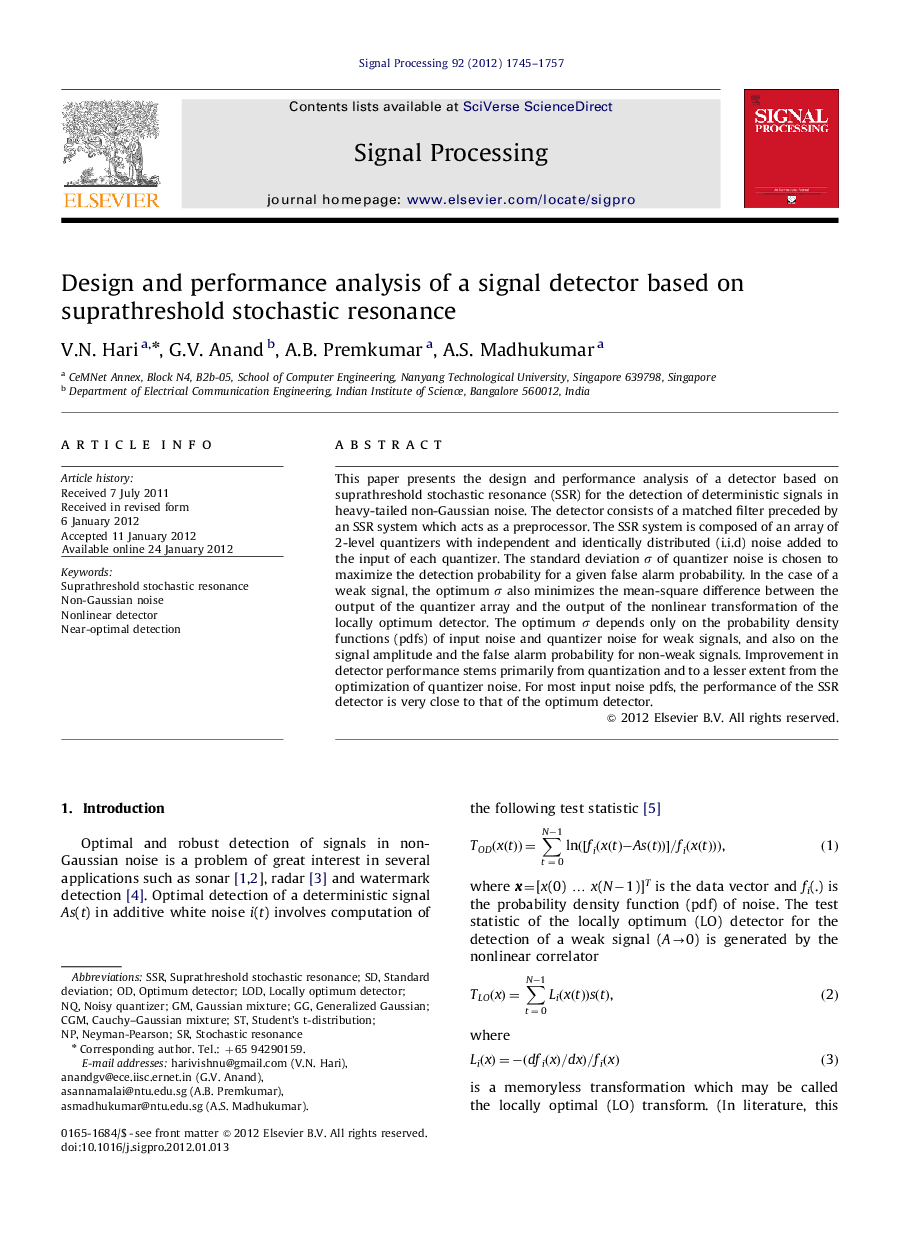| Article ID | Journal | Published Year | Pages | File Type |
|---|---|---|---|---|
| 562760 | Signal Processing | 2012 | 13 Pages |
This paper presents the design and performance analysis of a detector based on suprathreshold stochastic resonance (SSR) for the detection of deterministic signals in heavy-tailed non-Gaussian noise. The detector consists of a matched filter preceded by an SSR system which acts as a preprocessor. The SSR system is composed of an array of 2-level quantizers with independent and identically distributed (i.i.d) noise added to the input of each quantizer. The standard deviation σ of quantizer noise is chosen to maximize the detection probability for a given false alarm probability. In the case of a weak signal, the optimum σ also minimizes the mean-square difference between the output of the quantizer array and the output of the nonlinear transformation of the locally optimum detector. The optimum σ depends only on the probability density functions (pdfs) of input noise and quantizer noise for weak signals, and also on the signal amplitude and the false alarm probability for non-weak signals. Improvement in detector performance stems primarily from quantization and to a lesser extent from the optimization of quantizer noise. For most input noise pdfs, the performance of the SSR detector is very close to that of the optimum detector.
► Detector consists of pre-processor and matched filter. ► Pre-processor: array of 1-bit quantizers with added noise, easy to implement. ► Quantizer noise variance is optimized to maximize detection probability. ► Difference between pre-processor output and locally optimum transformation minimized. ► Near-optimal performance, robust against input noise modeling errors.
